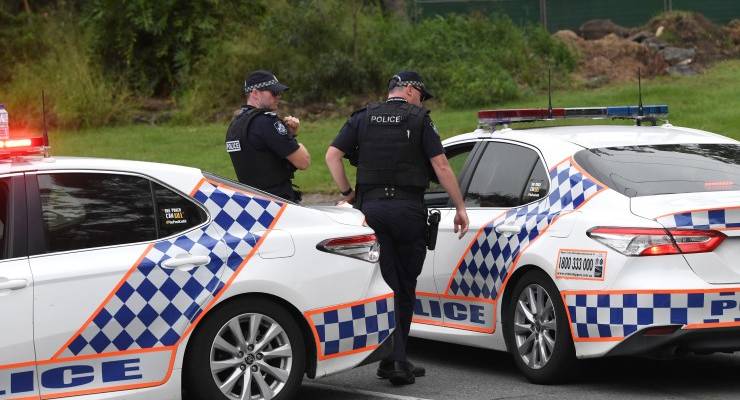
On the first day of December last year, I went for my usual walk around the local park to find a scene that has become devastatingly common in Australia. The night before, police had descended on a house overlooking the park where a 51-year-old woman was found dead in her garage after sustaining significant facial injuries. Later that day, homicide detectives arrested a 52-year-old man and the media reports included this painfully familiar line: “The pair were known to each other.”
And so the scourge of domestic and family violence — which on average sees one woman murdered by her current or former partner every 10 days — came to my neighbourhood, as it no doubt has before, and no doubt will again.
What I did not know was that this alleged murder would be the first in a spate of violence that would soon see 10 women killed in Australia in just 20 days. Let me repeat that: 10 women were killed in Australia in just 20 days — five times the average of one woman every 10 days.
Veterans of the anti-violence movement, including Sherele Moody, founder of the Australian Femicide Watch, which has documented the deaths of Australian women since 2015, said the figures were the worst they had seen in such a short time.
Moody condemned the relative silence that greeted the “unprecedented” events, as did activist Tarang Chawla, whose sister Nikita was killed by her partner in 2015.
“Two more Australian women killed in the last 24 hours,” he wrote. “That’s two more Australian men who have killed women. Ten women killed in 20 days, yet silence from many. Where are the vigils in their name? Where is the urgent action to reform and stop these senseless deaths?”
What, if anything, will change?
I still take my daily walks around the park, but now I pause and look at the house where my neighbour, who I did not know but who I desperately wish we as a society had done more to protect, died. I wonder what, if anything, will really change?
It is not lost on me that only a few months before this unprecedented, concentrated spree of men’s fatal violence against women, many cautiously welcomed the long-awaited launch of the National Plan to End Violence Against Women and Children, which Social Services Minister Amanda Rishworth pledged would end violence against women and their children “within one generation”.
The plan was meant to pick up where the previous, more than a decade-old national plan left off, a plan which under the stewardship of the former Coalition government had failed to meet the single metric for success it set for itself: to see a “significant and sustained reduction in violence against women and their children”. Twelve years later, rates of domestic violence have not fallen and rates of sexual violence have increased.
10 years of frustration
The start of this year also marked 10 years since I moved to Australia. In that time I have worked as a journalist and advocate to end men’s violence against women, building on a decade of work in the US and the UK. I have seen a lot. And I, too, share the intense frustration of Moody, Chawla and many, many others.
In 2017, writing for Women’s Agenda, I wondered whether Australia was losing the capacity to be shocked by domestic violence, something which, I explained, drove change. Now, perhaps, I have my answer.
In the past, such shocking individual acts or patterns of men’s violence against women and children seemed to jolt us individually and collectively out of a sense of complacency: the 2014 murder of Rosie Batty’s son Luke; the single day in 2015 when three women died, including Gold Coast mother Tara Brown who was rammed off the road and allegedly severely bashed by her former partner; the 2020 murder of Hannah Clarke, who with her three children was doused in petrol by her estranged husband and burnt to death.
But the events of late 2022 were greeted with relative silence. There was no meaningful public conversation. No earnest (if ultimately meaningless) front pages with community leaders standing with their arms crossed and pleading with others to “Stand up” or pledging “United in grief, we declare domestic violence to be unacceptable, always.”
So as I look ahead to 2023 and ask what can be done, what should be done — now part of my daily practice on these walks — I have a few things to say.
Keep the pressure up
If we are truly shocked by what happened at the end of last year, as we should be, we will keep the pressure on the Albanese government and state and territory governments to fully fund the national plan to ensure the lofty, if somewhat vague, ambition to end violence against women “within one generation” becomes a reality.
Experts and frontline workers criticised the Albanese government’s $1.7 billion commitment over six years in the October budget because it falls well short of the $1 billion a year they say is needed to plug gaps in the system. As Hayley Foster, CEO of Full Stop Australia, said: “Words on paper won’t become a reality if we don’t invest in the action needed.”
And we will stand with First Nations women and children, who have been promised a standalone, self-determined national plan to address violence against them. In September last year, the Human Rights Commission hosted a forum which issued a report calling for First Nations women and children to lead all efforts to prevent violence against First Nations women and children and the establishment of an advisory council and a taskforce comprising First Nations women.
“The solutions we need to end violence sit with us,” said Aboriginal and Torres Strait Islander social justice commissioner June Oscar AO. “We know what works, and we know what does not.”
And we will ask the hard questions about the follow-through and implementation of the plan. For example, where is the so-called “outcomes framework” that is supposed to be used by the newly established Domestic, Family and Sexual Violence Commission to provide the kind of evaluation and accountability that the first national plan so sorely lacked?
And, finally, we will tackle the poverty that, as Dr Anne Summers so brilliantly highlighted in her blockbuster 2022 report, “The Choice: Violence or Poverty”, presents women with an unacceptable choice between remaining in a violent relationship or being plunged into poverty. Almost 90,000 women, according to the report, said they wanted to leave, but couldn’t. A quarter of those said they simply could not afford to.
Summers said that having invested billions into reducing violence against women and their children in the previous national plan, these same governments have written policies that ensure that roughly half the mothers who do leave will end up living with their children in poverty.
“The government may not be able to immediately stop domestic violence,” she wrote, “but it could stop poverty. It chooses not to.”
Change would include, among other things, restoring the single parenting payment and raising the rate. It was, therefore, deeply disappointing that the so-called women’s budget of October 2022, Labor’s first since the election that came just over a week after the launch of the new national plan, did not comprehensively address the circumstances of women living in poverty. The two issues are clearly linked.
Against this backdrop of all that could — and should — be said in response to the shocking events of late 2022, the silence that greeted them is all the more inexcusable. There is, indeed, so much to say… and do.








I fear that this situation will only worsen as long as women – and the odd male – are forced to cohabit due to the current accommodation crisis. I think it is no coincidence that this appalling rate of violence and murder is escalating at the same time that many are unable to seek refuge, find a safe and affordable place to live, and are under immense cost of living pressures.
A very, very good observation. Now that homes are investments with tax implications, it’s going to be even harder to address the problem.
If it was teenagers in Townsville or Alice Springs, the mainstream media would be all over it.
Todays Court News from Brisbane. 36 year old man, arrested for domestic violence and held overnight, when released went and set his house on fire knowing his wife and her mother were inside. Punishment 2 years jail. Internet search will show the terror of the women and the pathetic excuse of the Judge for such a light penalty. Women have no chance if a man considers he owns her.
Came here to say this, i was so appalled. Just sentenced, but because hes been held on remand, he gets out on parole later this year.
The judge ought to be castigated for his callous, irresponsible words regarding the womens ongoing terror about his release “That cannot be cured, offenders are released” (or near enough) . What a cad, after it was he that proscribed a measly 2 year non parole for the attempted murder of 3 people (the woman was pregnant at the time).
The passive language doesn’t help. The media often use the passive voice when describing acts of violence against women – “a woman was raped/killed last night” as opposed to “a man raped/killed a woman last night.” Using the passive voice to describe men committing acts of violence, focuses on the victim while casting the assailant into the background, further contributing to victim blaming. Language shapes the way we think. We need to start using the active voice when speaking or writing about gender-based violence and place responsibility and accountability back onto the assailants.
Alleged assailant! That’s why news articles say things like ‘a 30 year old male is assisting Police with their investigation’.
So true Wembley. In general terms it’s about where women are seen to be compared with men on some weird hierarchical scale. The same language issue is present, for example, when a cyclist is involved in an accident with a motorist. The same `protective’ language suggests it’s an accident between a cyclist and a car.
And it’s the same need to maintain presumed innocence as with any crime.
If that were only true. Even when the woman is dead they often valorise her killer – he was a family man, a “ good bloke” . There’s no presumption of innocence after a conviction but there is still no anger or outrage.
Labor is right into poverty, Hawke’s prehistoric blubbering notwithstanding.
Just ask a Centrelink ‘client’.